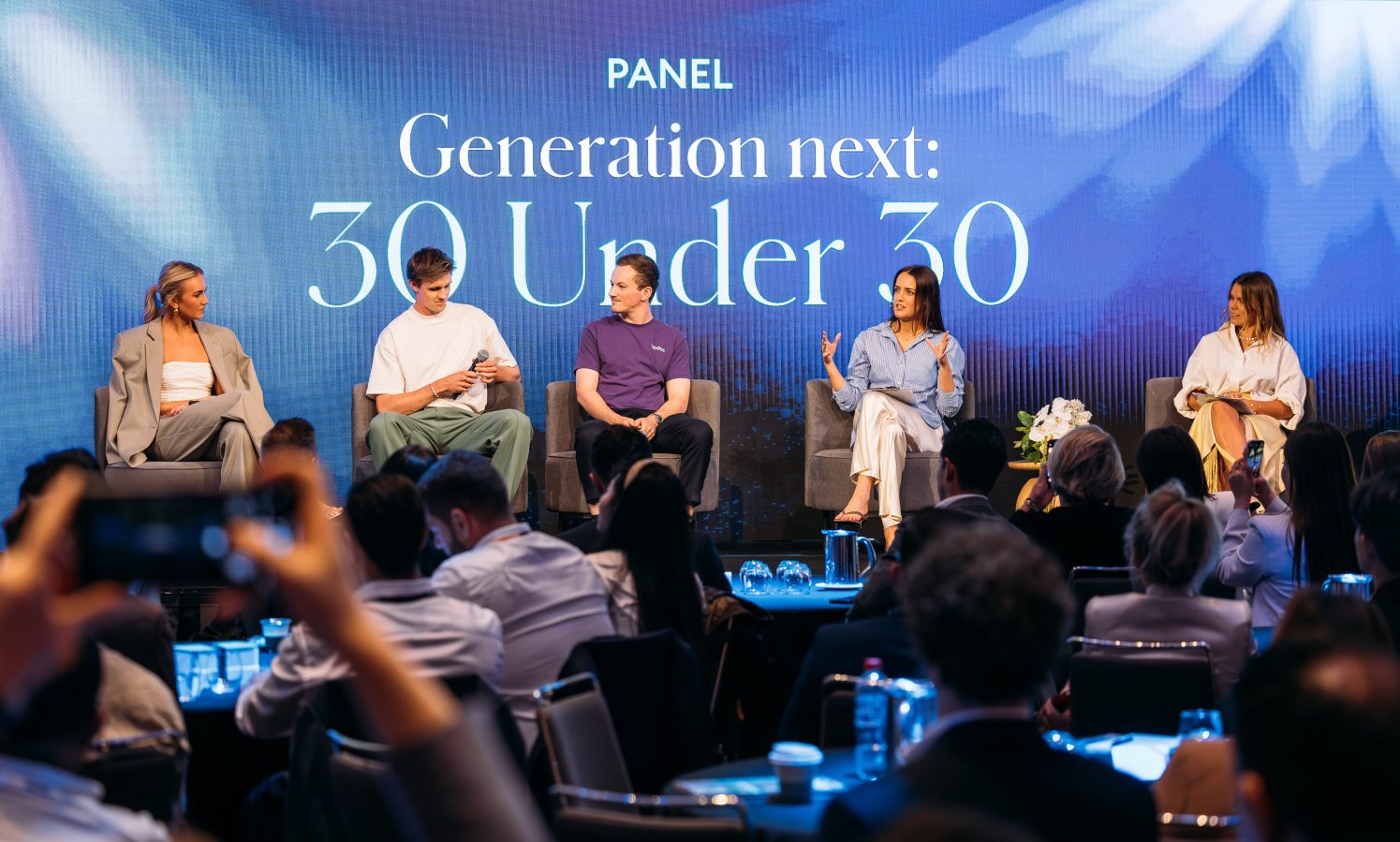The nuclear power lobby thinks Miss America can change Australians’ minds on nukes – and by the way, she’s a nuclear engineer.
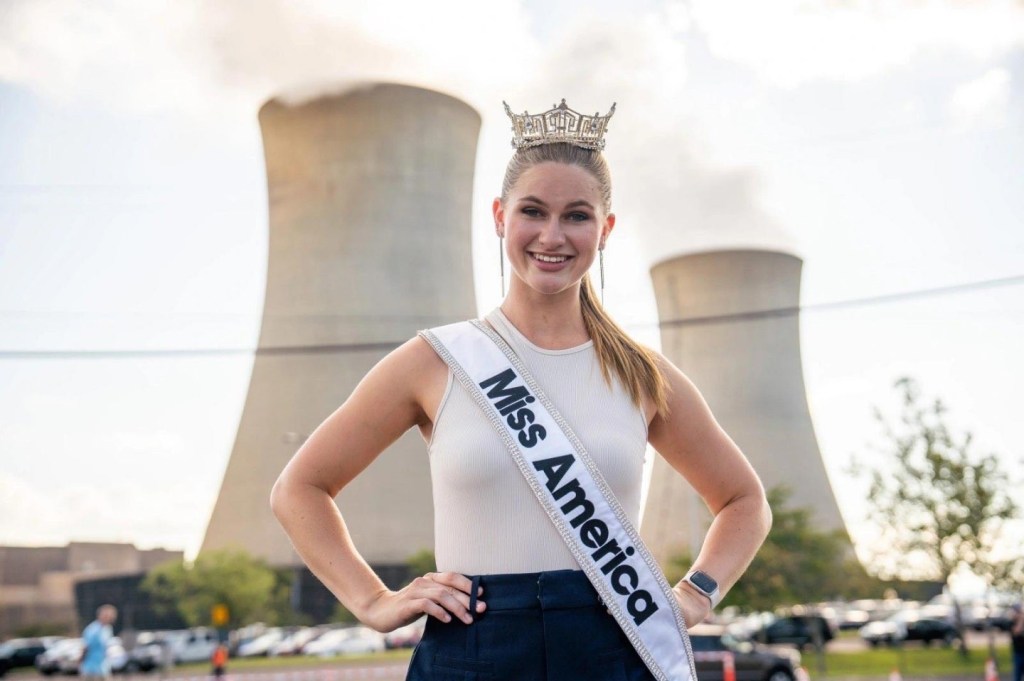
The 2023 Miss America, Grace Stanke, was surprised to learn that nuclear power was a hot political debate in Australia. “Here in America, it’s a very bipartisan issue,” she said. “It’s one of the few things our politicians can agree upon.”
Stanke is coming to Australia at the end of January in the hope she can bring some of that vibe Down Under. “I’d love to create that same environment at each and every one of these events that I’ll be going to,” she said.
Stanke, a Forbes 30 Under 30 participant in 2023, only got into nuclear engineering because her civil-engineer father told her there was no future in nukes, she said, admitting her knowledge then of nuclear science didn’t extend much beyond Hiroshima. She thought there were maybe two reactors in the US.
“I’ll never forget that first semester of college because that’s where I learned that nuclear science is the reason that my dad’s a two-time cancer survivor … I learned that there’s, in fact, 94 reactors in America and it creates about 20% of our country’s electricity.
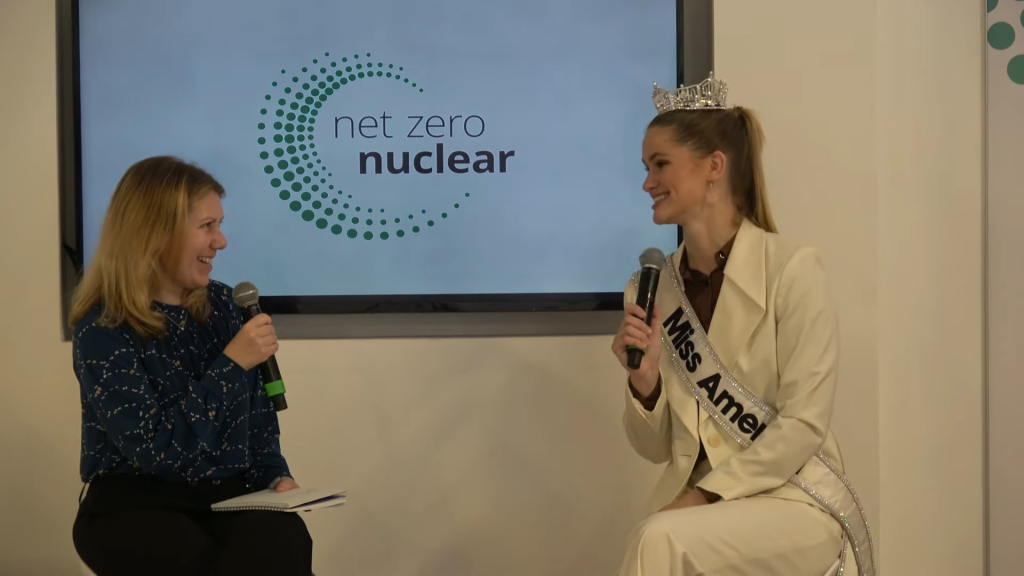
“I didn’t even realise that I lived two hours away from a nuclear power plant growing up.
“I said, ‘okay, you know, maybe this is something we need to reconsider.’ If nuclear science is in our smoke detectors, if our bananas are radioactive and our avocados are radioactive, which is completely natural … and completely normal, I thought, if nuclear is already doing this much good for society, imagine how much good it could do if we embraced it, right?
“On the energy side, it’s clean and it’s reliable energy. It’s building a resilient grid while also producing emissions-free electricity. To me, as a young person, Gen Z, one of our generational issues is climate change.
“So I became really passionate about advocating for nuclear on a variety of fronts. And since then, I’ve worked with a variety of different groups.”
She started entering pageants for the university scholarships they offered, she says. And ended up being Miss America 2023, which launched her international advocacy work. Her tour has been organised by 18-year-old Nuclear For Australia founder Will Shackel to help bridge the opinion gap between men and women, old and young, on nuclear energy.
A survey by Resolve Political Monitor in 2024 showed that 51% of Australian men favoured nuclear energy, compared with just 21% of women. The gap was only a little smaller between generations, with 46% of Australians over 55 supporting it while only 27% of 18-34 year olds did.
Shackel founded Nuclear for Australia last year, with funding from businessman Dick Smith who this week took out a full-page advertisement in The Australian drawing attention to the $6.5 trillion estimate it would cost to have sufficient Tesla batteries to power the country for a day and a half.
“An energy plan based on experimental modelling by the CSIRO for the future of Australia is setting the country up for skyrocketing power bills the likes of which we have never seen before; the assertion that bills will come down is an impossibility,” Smith said.
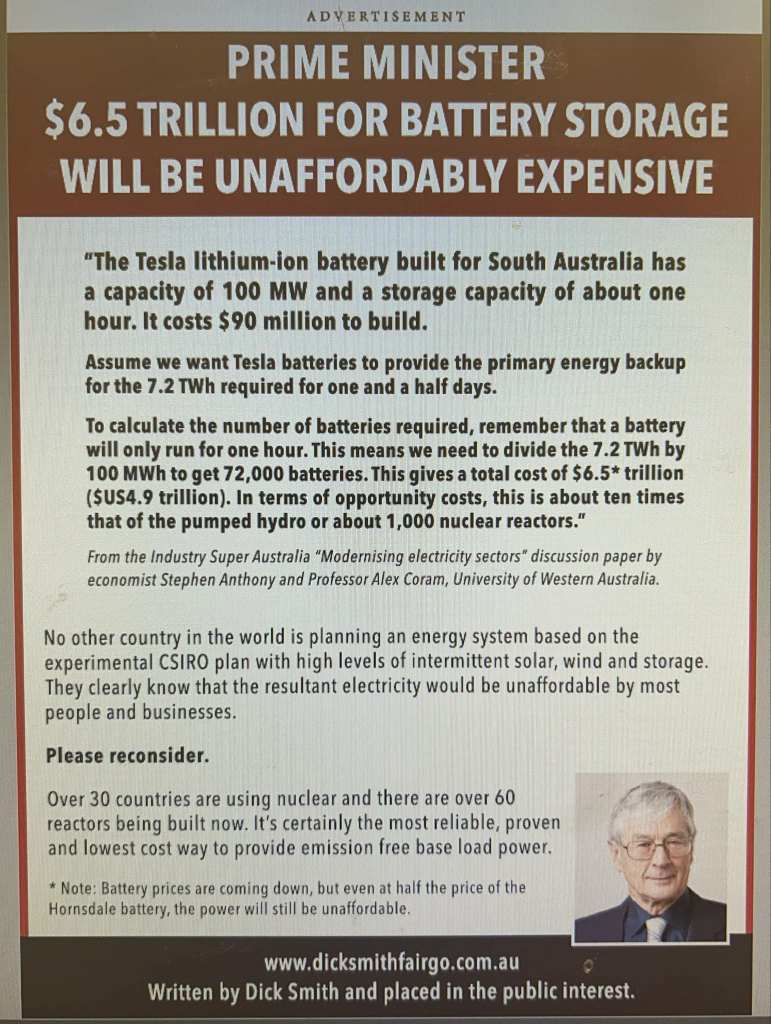
A common criticism of nuclear power’s practicality for Australia is that it doesn’t have the skilled workers needed. “This is one of my favourite subjects,” Stanke said. “Australia is getting new nuclear submarines. And the navy here in America is one of our biggest sources of our workforce. We’re drawing a lot of veterans into the nuclear industry. Additionally, when it comes to nuclear power plants and the actual function of them, there’s surprisingly few specific nuclear engineers needed.
“People picture a nuclear power plant as being a place that you have to study to some high level of a Ph.D. to be able to work there. You don’t … There is a need for nuclear engineers, obviously. But you guys have the education programs at University of Sydney. And I think that that’s something that can exponentially grow as the nuclear industry expands.”
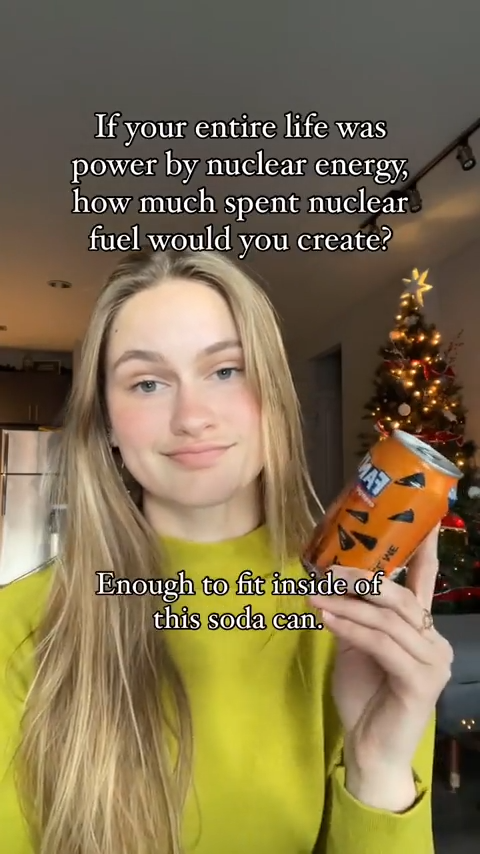
A recent report by the CSIRO found a 1 gigawatt large-scale nuclear plant would cost about $9 billion if it were possible to start building in Australia today and a nuclear industry was already well established. But that because there was no such industry, the first reactor would cost about $18 billion due to a “first-of-a-kind” premium. Small modular nuclear reactors, which have not yet been built anywhere, were estimated to cost about $29.6 billion for 1GW of capacity, again assuming a nuclear industry was established.
Stanke said the cost problem was just as big an issue in the US as it is in Australia. “I’m not going to deny that. But here’s the thing, the return that you get is power for literally generations. It’s crazy to me because my boss right now, [At nuclear generator Constellation Energy] her dad worked at a nuclear power plant and now she’s working at the same exact one.
“You’re building communities with high-paying jobs … Here in America, all of the people that are living near nuclear power plants, they love them. That is where you find the most pro-nuclear people because they know the economic impacts that that plant has, how safe it is and how reliable for energy it is.”
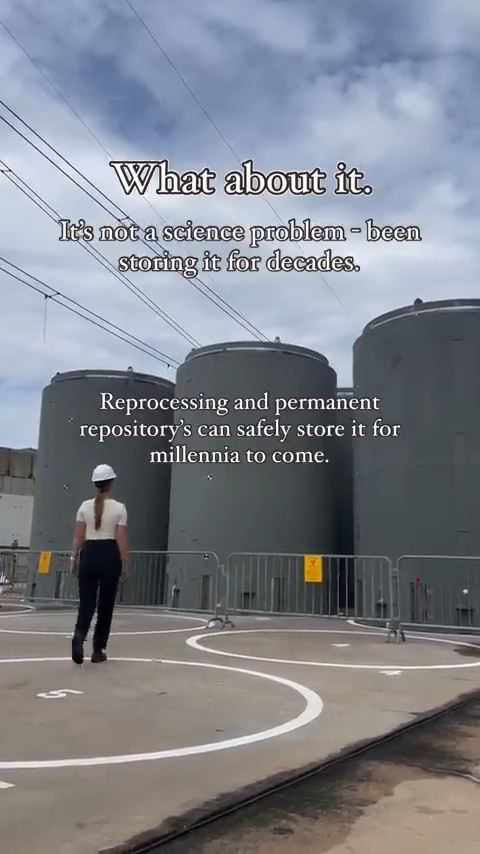
When Stanke first began advocating for nuclear power at college, the public perception of nuclear plants had been shaped by cartoon character Homer Simpson’s workplace. “Six years ago, I was working a lot with people to say, like, OK, nuclear waste is not glowing green goo. Let’s just start there.’ There is still a small group of people out there that do believe that.”
Another common critique of nuclear power is that Australia does not have sufficient time to build the plants to make a difference to carbon emissions in the timeframe needed by international treaties. And that they invariably come in over time and over budget.
Stanke says that efficiencies will come as everybody relearns how to build these things.
“Looking at the two most recent reactors constructed here in America, they’ve been the first two nuclear reactors in 30 years. The difference between Vogtle 3 and Vogtle 4 [in Georgia] is already insurmountable in terms of the time and the money saved between just those two units.”
She said there were about 80 startups worldwide all working to solve some aspect of the problems presented by nuclear. “Bill Gates has his own nuclear startup company, TerraPower, and they broke ground in Wyoming not long ago for their first test reactor. And then we also have companies like Microsoft that are partnering with the company I work for, Constellation, to restart nuclear reactors here in America to power their data centres.
“Those same things are happening when it comes to Amazon and NVIDIA and all of these other major tech companies.”
As far as safety goes, she said it was a common misconception that thousands died when the 2004 tsunami hit the Fukushima nuclear plant in Japan. While it was previously said that none died from radiation issues, Stanke pointed out that one person’s death from lung cancer in 2018 was attributed to radiation. None died from the 1979 Three Mile Island emergency in the US, and between 30 and 60 died as a result of the Chernobyl disaster, including long-term cancer deaths.
Stanke will speak in all capital cities except Hobart with a panel of nuclear experts between January 29 and February 6.
Look back on the week that was with hand-picked articles from Australia and around the world. Sign up to the Forbes Australia newsletter here or become a member here.


